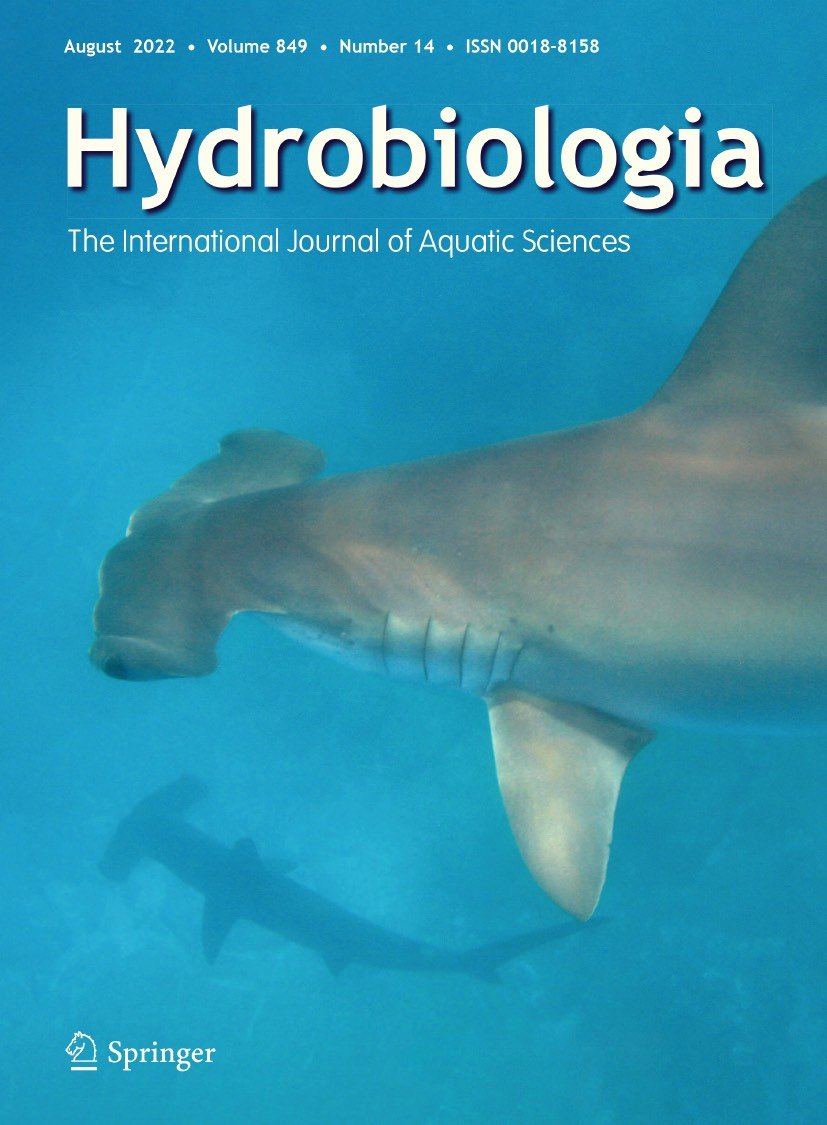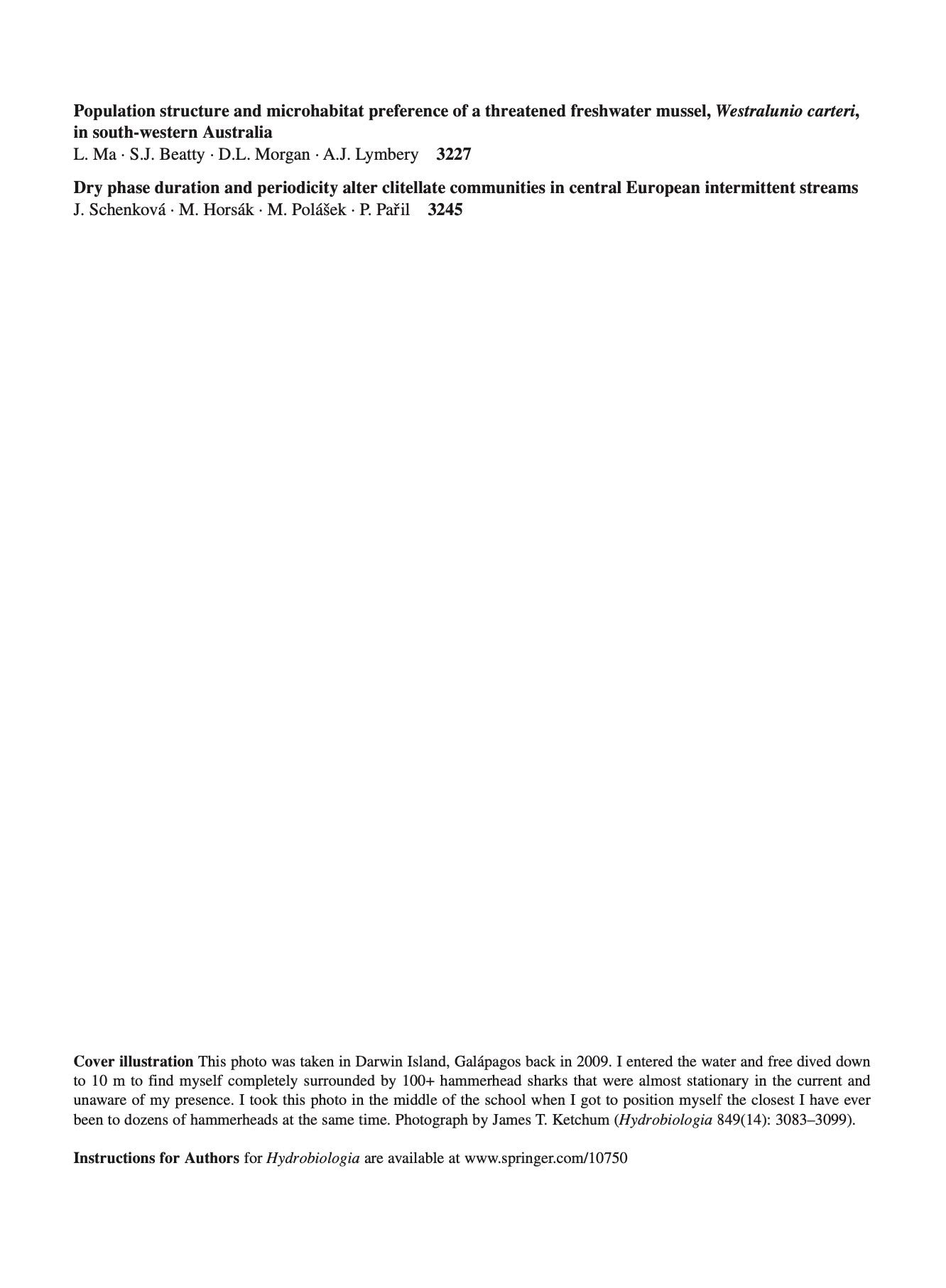Regional philopatry of scalloped hammerhead sharks (Sphyrna lewini) to nursery areas in the Mexican Pacific
Photo credit: © James Ketchum
Regional philopatry of scalloped hammerhead sharks (Sphyrna lewini) to nursery areas in the Mexican Pacific
José Miguel Rangel-Morales | Loray Paulina Rosales-López | Píndaro Díaz-Jaimes | Felipe Amezcua-Martínez | James T. Ketchum | Mauricio Hoyos-Padilla | Antonio Corgos
Hydrobiologia, vol. 849, 3083–3099 (2022)
DOI: https://doi.org/10.1007/s10750-022-04880-2
Abstract
The population genetic structure and female philopatry to nursery grounds of the scalloped hammerhead shark (Sphyrna lewini) were studied in different mangrove estuaries along the Mexican Pacific coast containing putative nurseries. These nurseries were grouped into northern (Sinaloa-Nayarit), central (Jalisco), and southern (Oaxaca-Chiapas) regions. Neonates and young of the year were collected near estuaries or river inlets, and their genetic variation was compared based on mitochondrial DNA (mtDNA) genome sequences and 11 nuclear microsatellite loci. The mtDNA analysis showed significant differences between the abovementioned regions, accompanied by genetic homogeneity of microsatellites. Based on the genetic divergence of mtDNA and the lack of differences in nuclear markers, our results are congruent with female philopatry to nursery areas, as observed in other shark species. The parentage analysis applied to the microsatellite data showed moderate levels of relatedness among individuals within nurseries, suggesting philopatry as a cause of the observed results. The pattern of nursery grounds of the scalloped hammerhead shark in the Mexican Pacific seems to be regional, as no differences were observed between neighboring estuaries within each studied region. These findings are relevant for delineating conservation plans to preserve key populations and minimize the effects of commercial fisheries.
Keywords: Genetics, Nursery grounds, Mitochondrial DNA




